
Free Summer Writing Activity
School’s out for summer! However, before kids jump into “lazy mode,” implementing a summer learning routine is important. There are so many skills kids can


School’s out for summer! However, before kids jump into “lazy mode,” implementing a summer learning routine is important. There are so many skills kids can

Okay, are you feeling that test-prep crunch? We’ve all been there. Preparing students for standardized testing in upper elementary reading can feel overwhelming, but don’t

As spring approaches, so does standardized testing for most teachers. Love it or hate it, testing season always seems to sneak up quickly. As students

Reading nonfiction texts in the classroom is an excellent way to build a solid foundation of knowledge. This is due to nonfiction texts spanning many
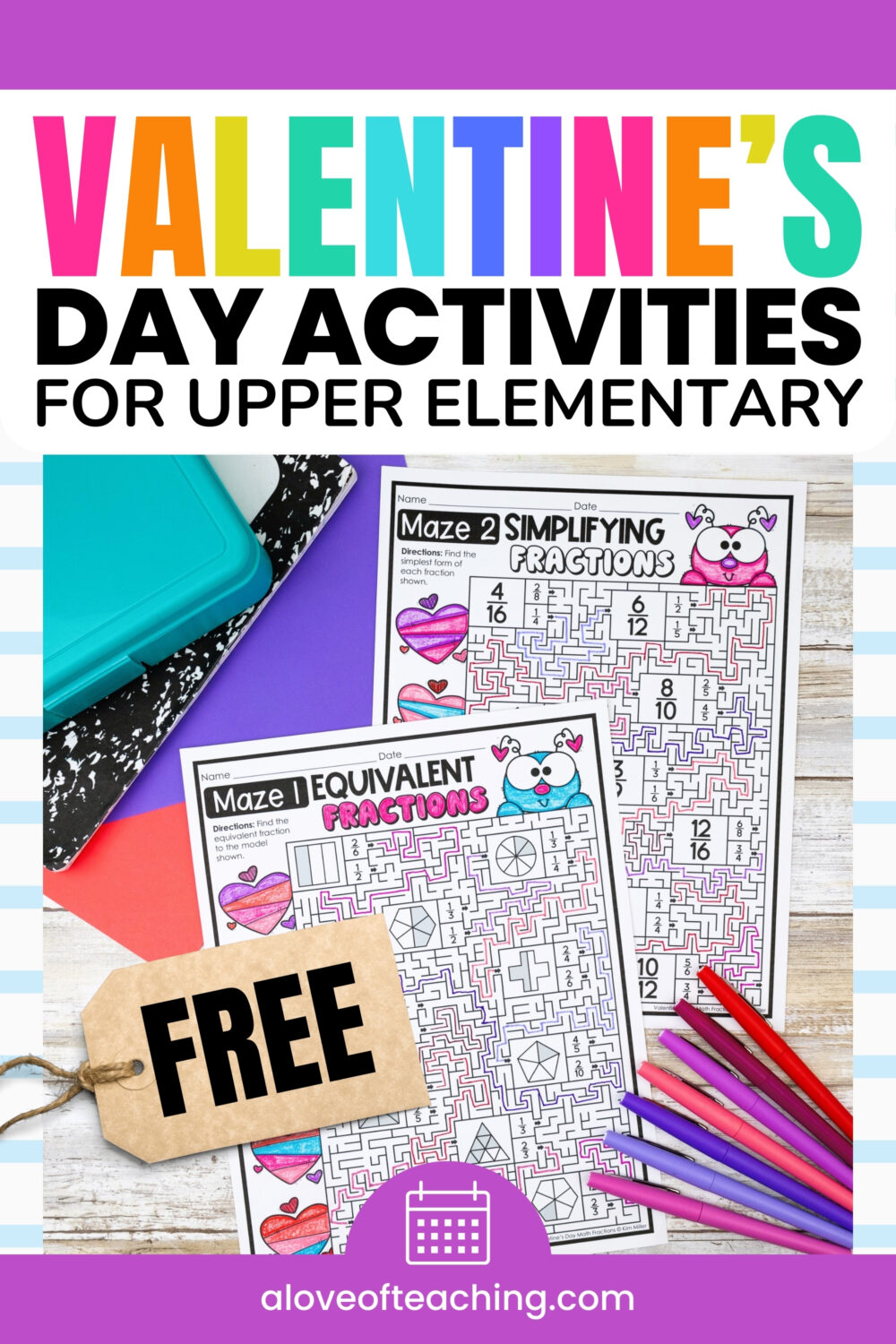
February 14th is fast approaching! Upper elementary students eagerly await the fun-filled day to pass out Valentine’s cards they have bought or prepared with love.

Teaching measurement is not for the faint of heart. Measurement can be a tricky topic for students, just as it can be extremely tricky to
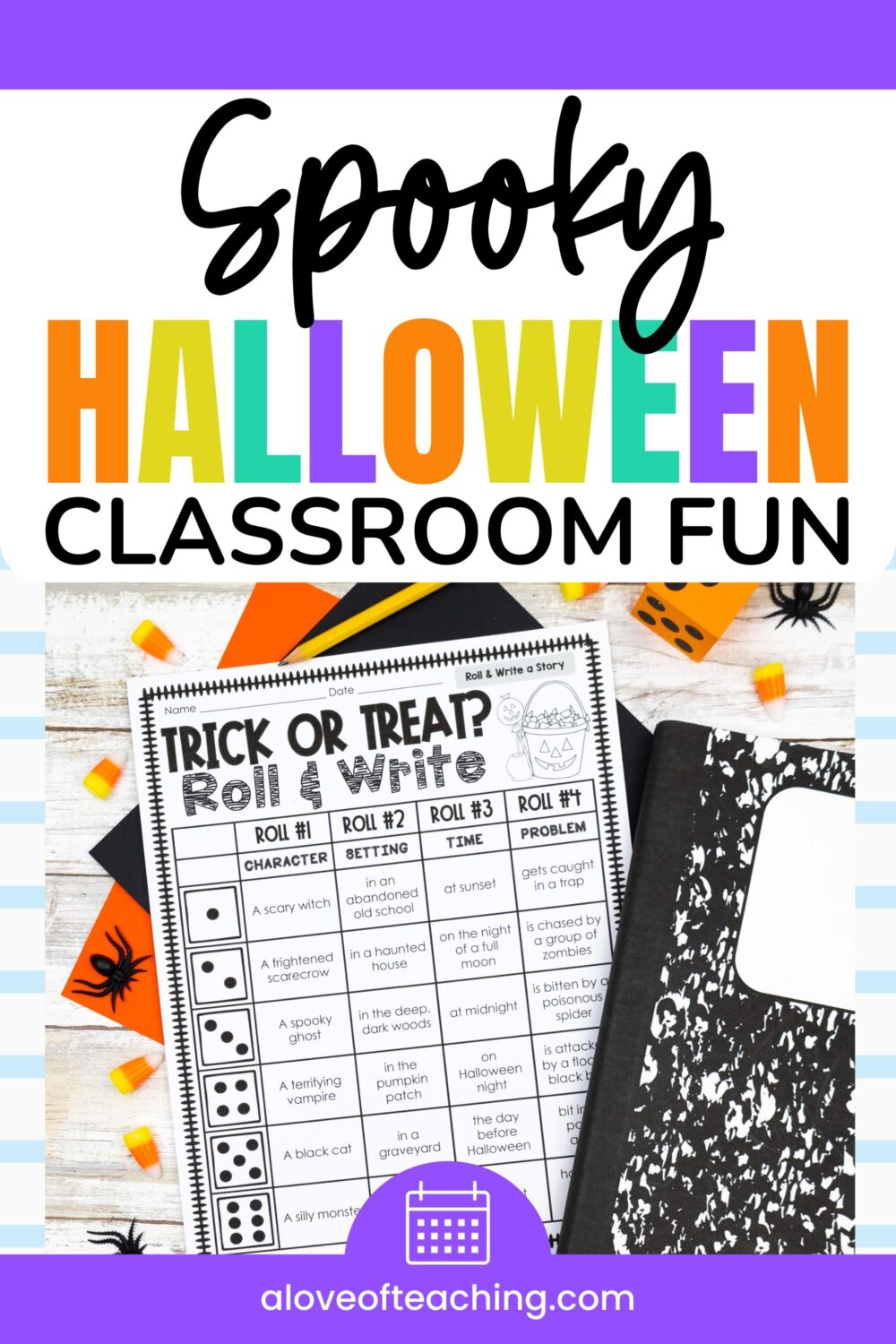
As the air gets cooler and the autumn breeze rolls through, colorful leaves and pumpkins decorate the classrooms. October brings a different kind of excitement
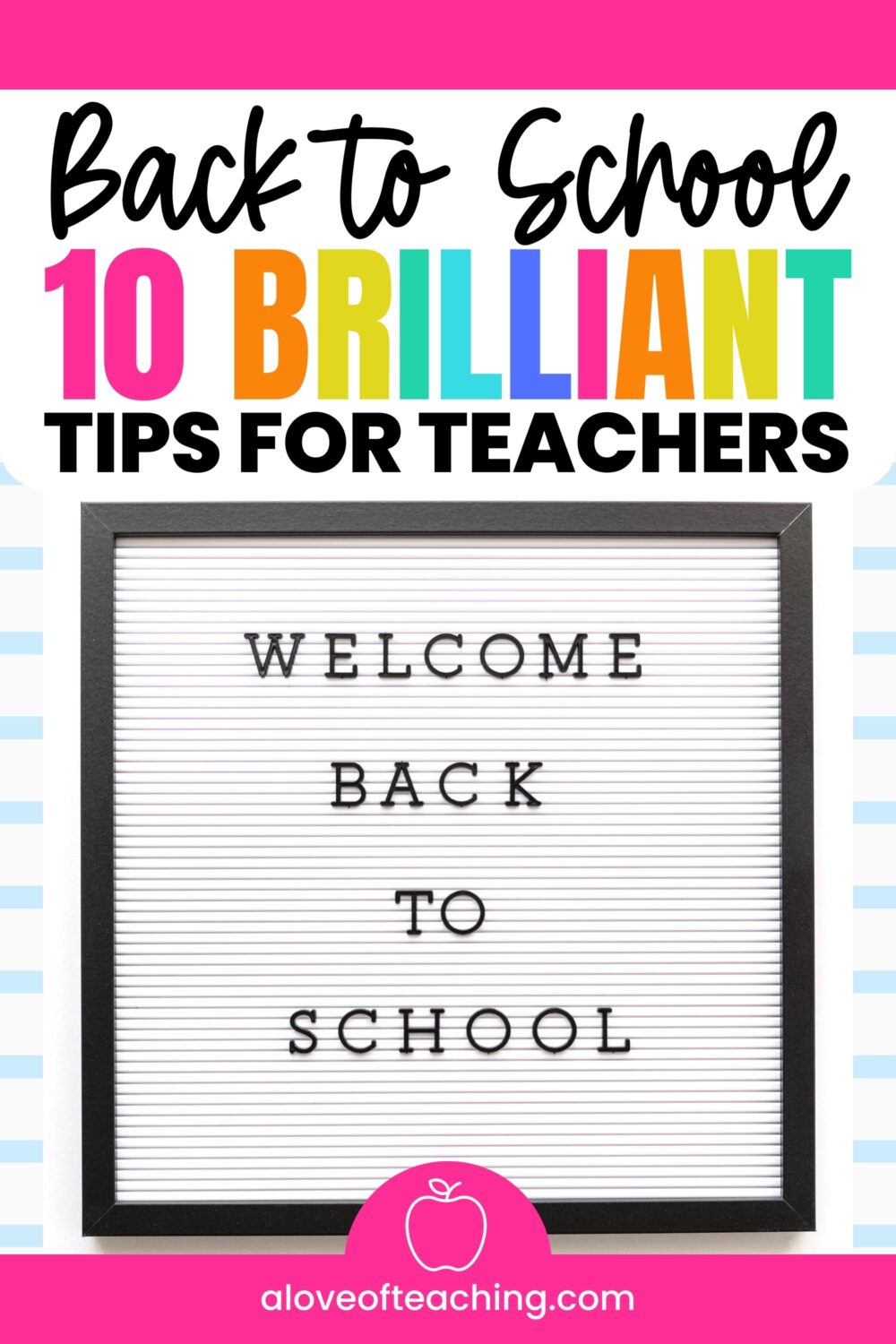
Grab your backpacks and sharpen your pencils because it’s back to school time! Are you fully prepped for an awesome school year ahead? While some

As teachers, we always look for ways to encourage good student behavior. Fun yet effective classroom rewards systems are a fantastic way to do this! One of my favorite classroom reward systems is punch cards! You are missing out if you aren’t using punch cards in the classroom! Punch cards will give you an easy-to-use tool to encourage excellent student behavior, goals, rewards, and more. The best part is all you have to do is print and punch! Here are some ideas on using punch cards that you can quickly and easily implement into your classroom reward system.

Spell check or no spell check, teaching spelling is an important part of language arts instruction in the elementary classroom. It’s a skill our students will use for the rest of their lives. But teaching spelling can be tough with all the rules and all the exceptions to the rules. That’s why being intentional and having a solid spelling plan are so important.

Mornings in the classroom can be full of chaos and excitement. You might find yourself being pulled in multiple directions. Add to that the morning administrative tasks, and it can be a not so calm start to your day. But . . . they don’t have to be that way. With some morning work ideas that get kids ready for their day, you will be able to find a little extra time to take care of all those morning tasks. Adding morning work to your student’s daily routine takes very little or no prep and helps students develop important independence skills! I am so excited to share how you can set the tone for the day with engaging morning work. With purposeful morning work and a routine you can commit to, you will be well on your way to a successful year with your students.

Do you dread teaching poetry? I get it! I’ve been there! The concepts of poetry are oftentimes difficult for children to understand and that makes it challenging to teach. The good news is that it doesn’t have to be this way. After years of teaching and practice, I’ve nailed down a few strategies for teaching poetry effectively in the classroom. They say practice makes perfect, right?

Engaging students in reading comprehension activities can be so hard. As teachers, however, we know the importance of these skills. So working to keep reading comprehension lessons and activities fresh and fun is half the battle. It is so important to keep students engaged so they can fine-tune their reading comprehension skills. Sure, we can assign reading passage after reading passage, but who really wants to do that? Instead, let’s focus on some engaging reading comprehension activities that will make reading lessons fun!
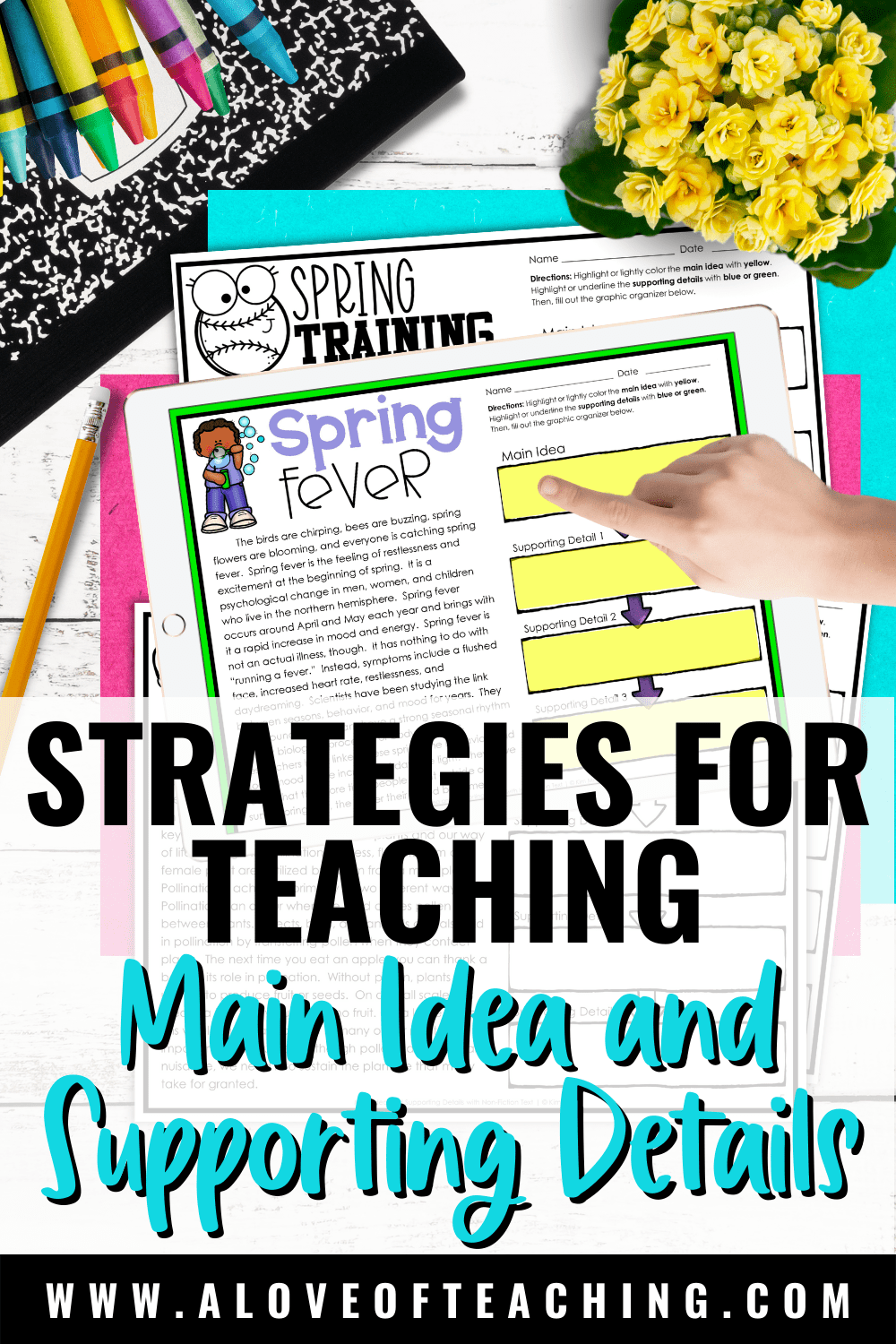
Teaching main idea and supporting details to students isn’t all that easy. Many students struggle with the concept and the process. They get confused and caught up in all of the little details when reading through the text. Some even confuse summarizing a passage with finding the main idea. So, how can you as a teacher make sure that this doesn’t happen to your students? After many years of trial and error, I have the solution that has worked in my classroom time after time. I’m excited to share with you my strategies for teaching main idea and supporting details.
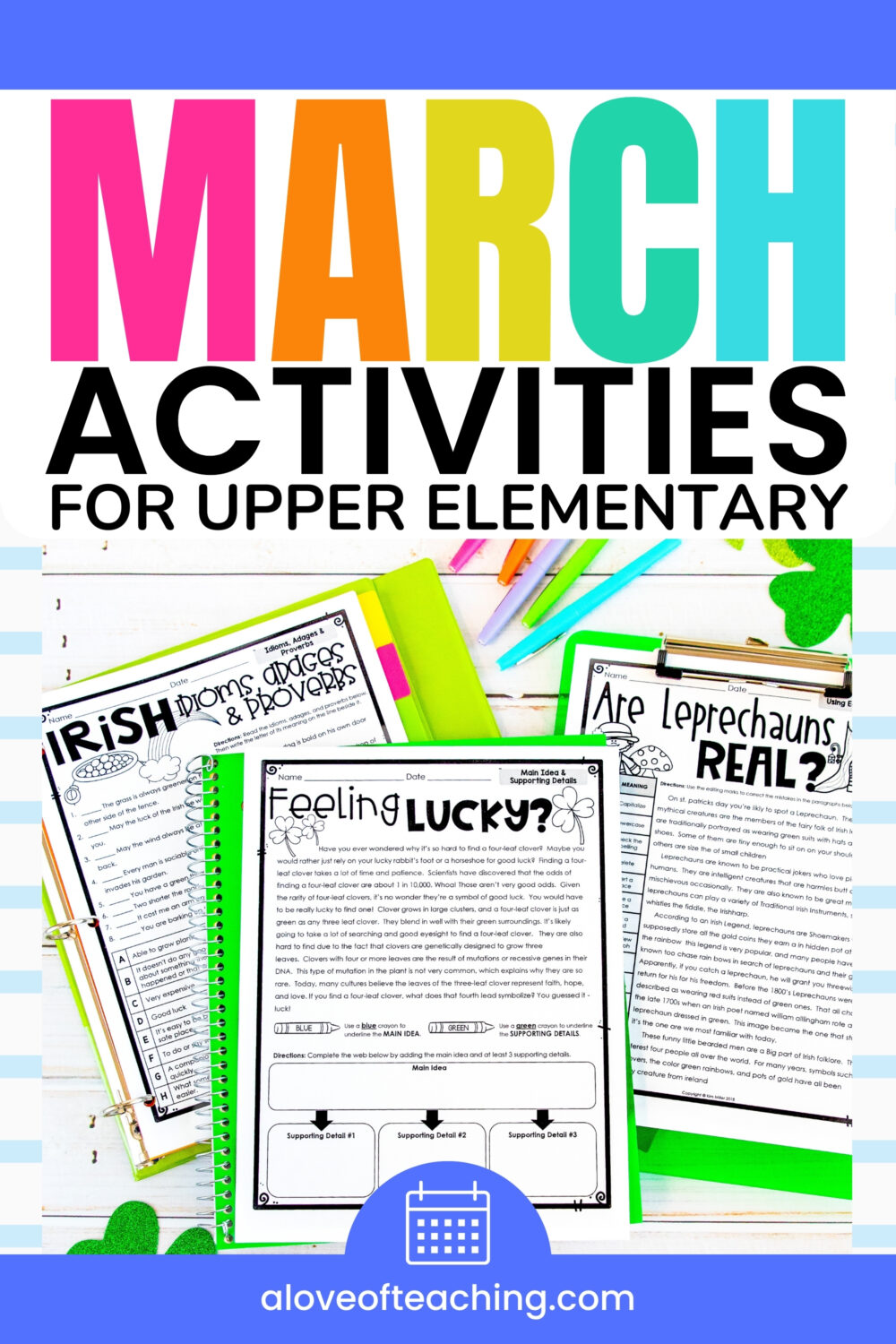
March is a month of budding potential in the upper elementary classroom. It’s a time when the academic year is in full swing, students are eager for a change after the winter blues, and teachers are looking for engaging activities to keep the learning environment exciting and educational. From springing into new seasonal reads to adding some St. Patrick’s Day charm in lessons, here’s a pot of gold full of ideas to enrich your upper elementary classroom.

I’m Kim, the founder of A Love of Teaching. My ultimate goal is to empower teachers to reclaim their afternoons and weekends, all while feeling confident in their role as educators. I’m passionate about inspiring teachers with fresh ideas and providing them with time-saving materials.
I’m happy you’re here!